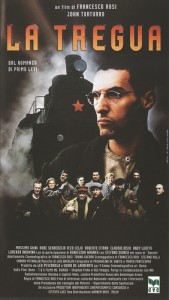If you are planning to attend a Spanish immersion school, it only makes sense to check out some of the great cinema of Latin America before your trip. Argentina, in particular, has a very robust and impressive history of film-making. In fact, cineahas been an important part of Argentine culture since the late 19th century. Exploring the country’s film history will give you insight into the culture and language.
 The Early Days of Argentine Cinema
The Early Days of Argentine Cinema
You can certainly get a great deal of insight into Latin American cinema history by watching films from the early part of the 20th century. One of the first prominent films in Argentina was La Bandera Argentina made by Federico Figner. A French photographer named Eugene Py is also credited for making some of Argentina’s earliest films including the first documentary Viaje del Doctor Campos Salles a Buenos Aires in 1900 and La Revista de la Escuadra Argentina in 1901.
A Major Progression in the Film Industry
A major leap in Argentine cinema occurred in 1933 when Movietone arrived, providing voice and also music. At this time, two cinematographic studios arrived on the scene, namely, Argentina Sono Film and Lumiton. One of the most famous films from the 20’s was Dancing, which was a tango film that launched the careers of stars Amelia Bence and Tito Lusiardo. As you may very well decide to learn how to dance the tango when you learn Spanish in Argentina, the film Dancing may get you in the mood!
During the late 30’s and early 1940’s, Argentine cinema produced upwards of forty films per year. While religious and political pressure infringed upon creative freedom, still filmmakers remained prolific during this time period. Of course, it should come as no surprise that foreign cinema began to infiltrate Argentina. As a result, the country launched its own organization “Instituto Nacional de Cinematografía” with the goal to promote and fund local film. Some of the more classic films of this period include Historia de una noche, Malambro and Pelota del trapo.
Cinema of the 60’s and 70’s
Cinema flourished in Argentina in the late 1960’s and early 1970’s. Many of these movies had political and social undertones. For example, Lautaro Murua’s 1961 film Alias Gardelito was about the trials of poverty and living honestly. French Cine Verite also influenced Argentine cinema including the 1974 film La Tregua by Sergio Renan, which was nominated for an Oscar. There was also a trend of sex comedies during this time period, which tended to be shocking for audiences, as they often featured nudity.
Before you attend a Spanish language school, it only makes sense to sit down and view some of these films. Not only will they acquaint you with the country’s history, they will also build up your listening comprehension skills. You will find yourself quickly learning commonly used phrases and expressions. This is a great way to prepare yourself before you set off to learn Spanish in Argentina.